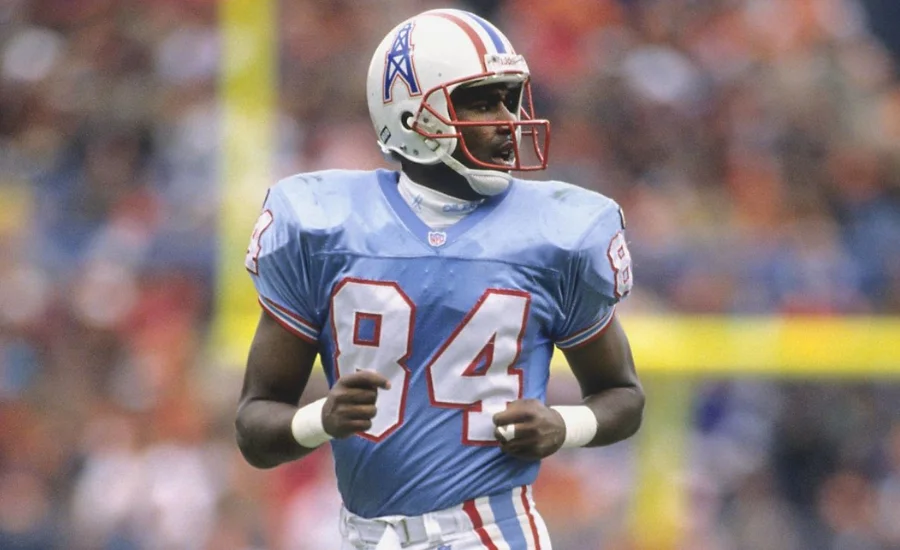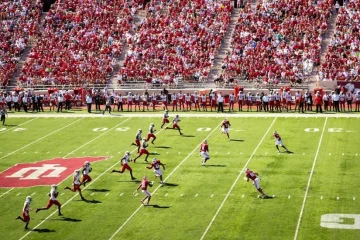Do you recall that sense of anticipation on draft day? The excitement pulsating through you as your team selected that promising prospect, envisioned as the next big superstar destined to lead your franchise to glory? Well, reality often has a different script.
Not every draft pick unfolds as teams envision. Some top prospects struggle to translate their potential into success at the professional level. In other cases, promising careers are derailed by unforeseen injuries. Regardless of the cause, certain draft picks fall short of the lofty expectations. Today, let’s delve into the narrative of one of the most significant draft letdowns in recent memory. Join us as we examine how this once highly-touted prospect, initially deemed a future franchise player, ended up labeled as a draft bust. We’ll uncover the missteps and unravel the story of why this particular pick veered so drastically off course.
What Is Unsuccessful Draft Pick?
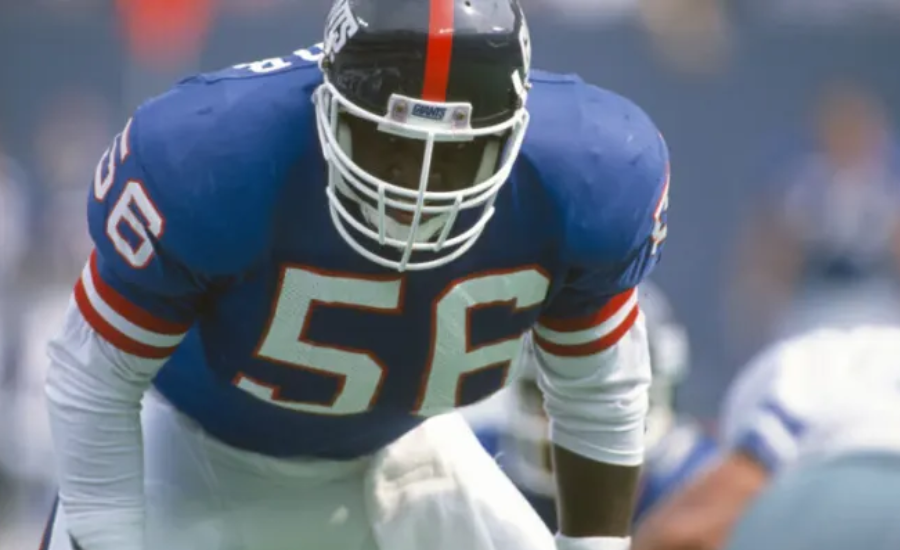
An unsuccessful draft pick refers to a player chosen in the NFL Draft who, despite high expectations and a promising college career, falls short of achieving success in the league. These individuals, initially praised for their potential, unfortunately struggle to replicate their collegiate accomplishments on the professional stage for various reasons.
Exploring What Constitutes an Unsuccessful Draft Pick in the World of Sports
In the sports world, an unsuccessful draft pick is like a player who got picked during the draft but didn’t live up to the hype. Teams invest a lot of time and money in finding and choosing players they think will make a lasting impact on their squad. But, you know, predicting how a player will do in the pros is a bit like trying to guess the weather – it’s tricky.
So, how do you know if a pick didn’t work out? Well, there are signs, like the player having a hard time getting on the field or being quickly dropped from the team. Maybe their performance and stats just don’t match up with what you’d expect from someone chosen so early in the draft – like a first-round pick who never quite becomes a regular starter. Off-field stuff, like injuries or attitude problems, can also throw a wrench in things. And if the pick seemed like a bit of a stretch at the time – you know, drafted higher than most folks thought they would be – and then they don’t live up to that hype, that’s a letdown.
Now, here’s the kicker: if another player picked in the same position but later in the draft goes on to have a way better career, it really highlights the disappointment of the first pick. Being a draft dud doesn’t mean a player is a total bust, though. There are loads of reasons why a pick might not work out, stuff that’s way beyond the team’s control. But, especially for those high draft picks, there’s this big expectation to perform. When they fall short, it’s like the team wasted a golden opportunity, and fans and the organization feel let down. The fallout from a draft gone wrong can stick around, haunting a team for ages.
Causes Behind Unsuccessful Draft Picks
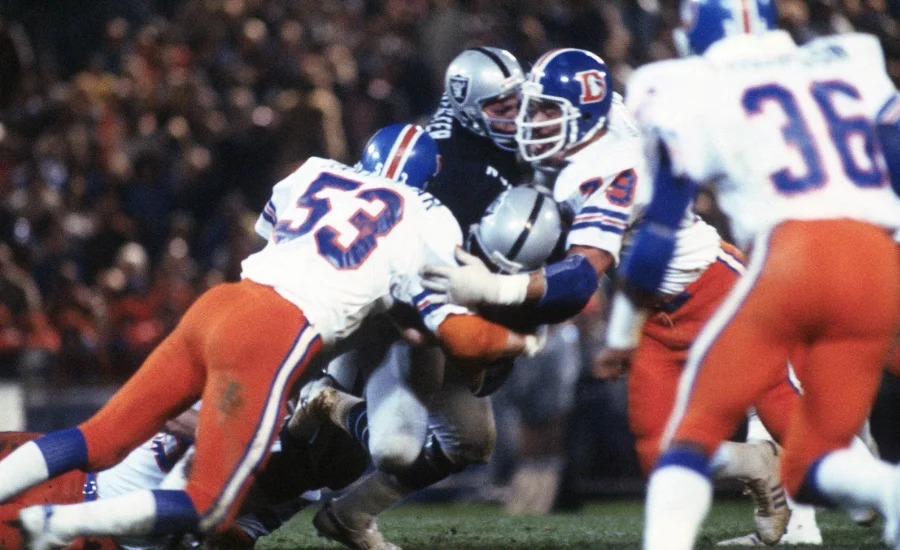
To truly be considered a successful draft pick, a player may fall short of expectations for various reasons. These reasons are as diverse as the individual player’s shortcomings and the broader issues at play beyond their usual comfort zone. Let’s explore the primary factors contributing to draft picks that don’t quite hit the mark:
Flawed Talent Assessment:
A mistaken assessment of a player’s abilities is a major contributing factor to poor draft choices. Teams evaluate a player’s skills and attributes in great detail, but this doesn’t necessarily convert into a clear understanding of what traits are most important for success in the professional ranks.
Injuries:
Injuries pose a significant risk and can be a considerable reason for unsuccessful draft picks. Predicting unforeseen injuries that impact a player’s performance and resilience is challenging. These injuries can diminish the athlete’s effectiveness compared to their mid-season form.
Insufficient Development:
Another factor leading to unsuccessful draft picks is inadequate player development, marked by a lack of attention and support from the club responsible for their sports education. Without comprehensive coaching, training programs, and avenues for development, players may struggle to reach their full potential.
Off-Field Issues:
External controversies, including legal troubles, disciplinary actions, and personal challenges, can adversely affect a player’s career. The media’s increasing focus on athletes’ behavior off the field, while less directly related to their professional tasks, can impact their reputation, performance, and future opportunities.
Mismatch with Team Dynamics:
Sometimes, a player’s talent and attitude may not align with the team’s style of play or overall atmosphere. Lack of cohesion among players and the team may lead to challenges in terms of team integration, potentially resulting in unsuccessful draft picks.
Unforeseen Circumstances:
External factors like changes in coaching staff, team management, and unexpected surprises can also impact a player’s success. This unpredictability affects team dynamics and even the trajectory of a player’s career, leading to unexpected outcomes. The reasons for unsuccessful draft picks can be numerous and varied.
Results Of Unsuccessful Draft Picks
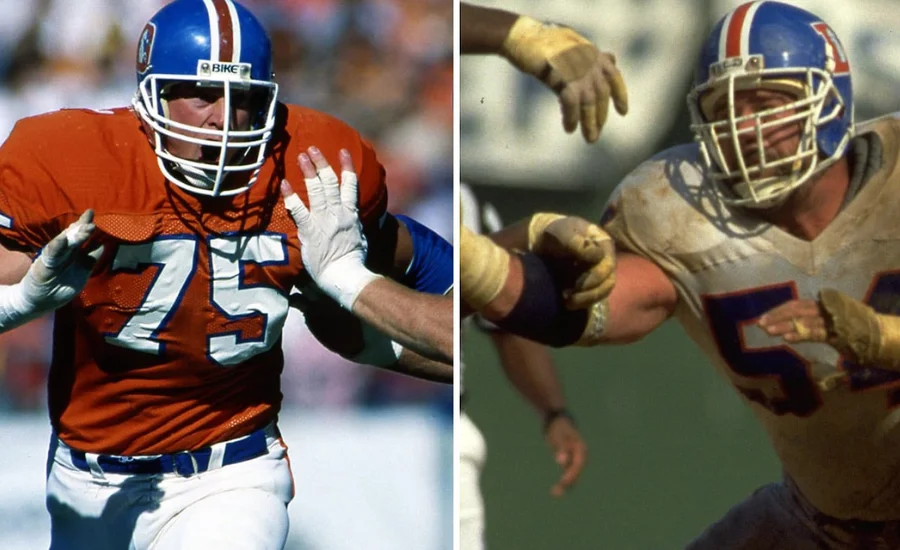
If a player selected via draft fails to meet expectations, it’s not merely a matter of poor performance. Teams invest a lot of money in developing new talent, so it hurts when it doesn’t work out.
But it’s not just about money; it hits the team’s vibe and morale hard. A big-name draft letdown can really bring down the team spirit and leave fans feeling less sure, sending ripples of disappointment through the whole organization.
The Draft Experience
Let’s familiarise ourselves with the ins and outs of the drafting process before getting down to business. Teams in professional sports go through a rigorous process when selecting players, which is an important dance that essentially determines a team’s destiny. Everything about this is organised, with teams searching for exceptional players, frequently plucked from collegiate or other amateur leagues.
At the core of this process is a complicated mix of scouting, analysis, and evaluation – this intricate dance to figure out what each player is really made of. Scouts travel the country, carefully watching players perform, trying to spot that special something that separates the exceptional from the just-okay. And this journey isn’t all about the flashy games on TV; it goes into those low-key training sessions and grassroots competitions, where you see raw talent in its most unfiltered form.
All the info gathered from these efforts becomes the groundwork for decisions, but it’s not just about the stats. There’s this whole other layer of intangible qualities – things like strength, determination, and that elusive “it” factor – you can’t really measure, but they play a massive role in shaping a player’s destiny. Coaches and analysts get into the nitty-gritty of game tapes, breaking down every play and move, hoping to find hidden gems and possible warning signs.
The tension increases, expectations rise, and teams’ futures are at stake as draft day approaches. Every selection has a purpose beyond simply securing a seat on the squad: it’s an opportunity to infuse optimism, rekindle dreams, and provide the foundation for future success. The draft is still a voyage into the unknown, however, where the potential for grandeur meets the erratic turns of reality, despite all the preparation and analysis.
Approaches to Prevent Draft Picks from Falling Short of Success

While organisations may never completely eliminate the possibility of choosing a draft flop, they can take steps to lessen the possibility of an expensive error. Establishing a thorough scouting infrastructure is crucial since it aids in identifying talent and reveals any potential warning signals that could point to problems down the road.
The drafting process is heavily influenced by data analytics, which provides teams with useful information about a player’s performance and future path. Moreover, clubs can learn vital information about a player’s potential resilience to the demands of professional sports by conducting examinations that delve into their mental and psychological profiles.
Teams hope to gain more awareness and strategic insight as they manoeuvre through the unexpected landscape of the draft by combining these tactics.
How an Unsuccessful Draft Pick Affects a Team
Teams put in a ton of effort scouting players and making those crucial decisions about who to pick each year. But when a draft pick doesn’t work out, it’s like a punch to the gut with some serious consequences.
An unsuccessful draft pick means the team missed a chance to bring in a young, promising player without breaking the bank. High draft picks are expected to step up fast, so messing up on a top pick leaves a big gap that’s pretty hard to fill. Teams end up in a bit of a frenzy, trying to find a replacement, usually having to splash out on an expensive free agent.
The fallout from a bad draft pick goes way beyond just the immediate impact. Think about it – what if your team could’ve snagged a future star instead of someone who didn’t quite cut it? That would’ve meant years of awesome play without burning a hole in the team’s budget. Teams only get a limited number of high draft picks, so each one is like gold.
But it’s not just about the money. Failed draft picks mess with a team’s future plans. Sometimes teams trade away future picks, hoping to hit the jackpot and land a star player. When that doesn’t pan out, they’re left with nothing in the pipeline for future prospects.
And let’s not forget about the fans. Seeing a top draft pick struggle season after season is tough to watch. It makes fans question whether the folks in charge know what they’re doing. The pressure piles up for the team to get their act together and make the next draft count.
In the end, how badly an unsuccessful draft pick hurts depends on which round it happened and how high up the pick was. Whiffing on a top-five pick can set a team back for what feels like forever. Missing out on a late first-rounder, while still a bummer, might be more of a stumble than a total wipeout. The only way to bounce back is to learn from the mistake and make smarter choices down the line.
Drafting Players That Don’t Meet Expectations: A Common Occurrence
Even with all the careful planning, picking players who don’t quite make the mark is just a part of the sports scene. It happens for various reasons, like players getting hit with injuries, struggling to make the leap to the pro level, or facing unexpected challenges in adapting to the pro game.
Teams work very hard, scouting nonstop and studying every aspect, but in the capricious world of sports, not every selection results in success on the pitch. Particularly, injuries have the power to deride bright careers by keeping athletes from realising their full potential.
Then there are other players who struggle to make the move from playing in amateur leagues or colleges to the major levels. There is fierce competition along with a steep learning curve. Though it’s a bitter pill to swallow, these incidents serve as a reminder of how capricious and humble the world of sports can be, particularly in regards to player drafts.
Examinations of Remarkable Transformations in Successful Draft Picks
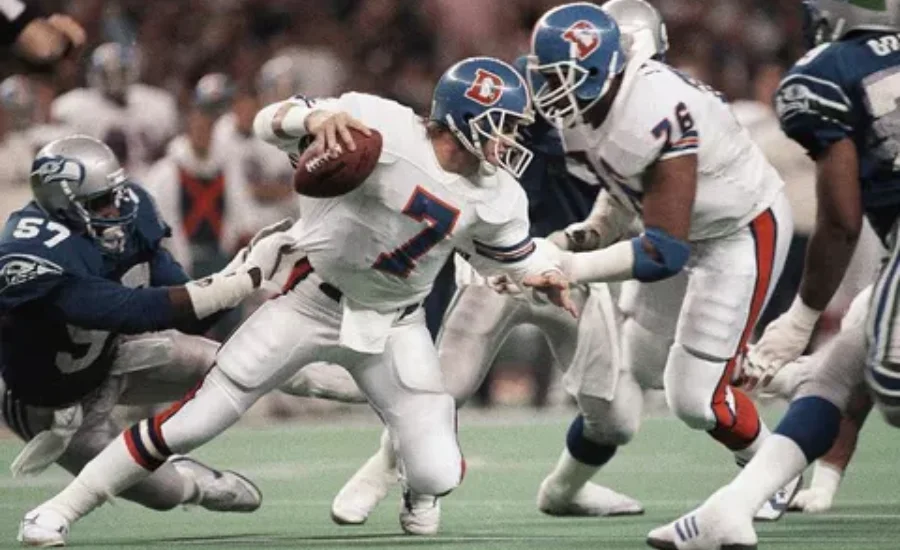
There are some amazing tales of athletes who manage to turn the tide after overcoming early obstacles and going on to achieve extraordinary success later in their careers in the world of sports, where not every draft pick lives up to the promise. A few notable instances are Michael Jordan and Drew Brees, who personify the spirit of persevering through adversity.
Consider the case of Drew Brees. After a shoulder injury, he had to cope with sceptics and doubters who questioned his talents early on. Now, though, what do you know? He did more than just bounce back; he rose to become one of the NFL’s all-time great quarterbacks and guided the New Orleans Saints to a Super Bowl triumph.
Then there is the basketball great Michael Jordan. Unbelievably, he wasn’t initially selected for his high school basketball squad. However, he made the team and went on to become one of the best players in NBA history, winning several championships, through sheer willpower and hard work.
These tales serve as a reminder that failures can sometimes mark the start of an incredible adventure in the erratic world of sports. It all comes down to perseverance and a steadfast dedication to getting through difficult situations.
Exploring What Makes a Draft Pick Unsuccessful
An unsuccessful draft pick is like picking an athlete during the draft, usually in the early rounds, who just doesn’t live up to the expectations or doesn’t make a big impact on their team. It’s not just about the stats; it can show up in different ways. For example, when players don’t perform as well as everyone thought they would on the field, court, or ice, they end up tagged as unsuccessful. Then, there’s the tough luck of injuries that can mess up a player’s game, leading to less playing time or even forcing them to retire early.
Off-field problems add another layer to this whole thing. If a player is dealing with legal issues, substance abuse, or just behaving badly, it becomes a headache for the team. It messes with their on-field performance and throws off the whole team vibe. Sometimes, it’s also about fitting in with the team – getting used to the team’s style, the coaches, or just the overall vibe. If a player struggles with that, it makes it hard for them to shine, and that lack of success gets the label of an unsuccessful draft pick.
Why Crafting a Thoughtful Draft Plan Matters

The NFL Draft is a big deal for teams – it’s like their shot at shaping the future. And to nail it, having a smart draft plan is everything. It’s not just about grabbing players; it’s about finding that perfect balance between filling immediate gaps and snagging the most promising talents out there.
Crafting a solid draft strategy isn’t just a numbers game. It’s like peeling back layers to understand a player’s character, work ethic, and how they’d vibe with the team. It’s not just about skill; it’s about picking someone who’s not just good but fits right into the team’s vibe and culture.
Teams have to play this strategic game, weighing their current needs against what’s happening in the whole league. Is it time for a star quarterback, or is a rock-solid defense what’s missing? The draft strategy is like chess, thinking not just about today but also about where the team is headed in the future.
So, it’s more than just picking players. Draft strategy is like a master plan, knowing the team inside out, predicting what’s coming, and understanding those intangible things that turn a good player into a game-changer for the team.
The Contribution of Analytics
Analytics play a growing role in the NFL, with teams relying on data to shape their draft choices. By digging into a player’s college stats and performance, teams can paint a clearer picture of what they might bring to the pro level. It’s like teams are reading the player’s story through their college achievements, helping them gauge the potential impact these players could have in the professional arena.
In brief
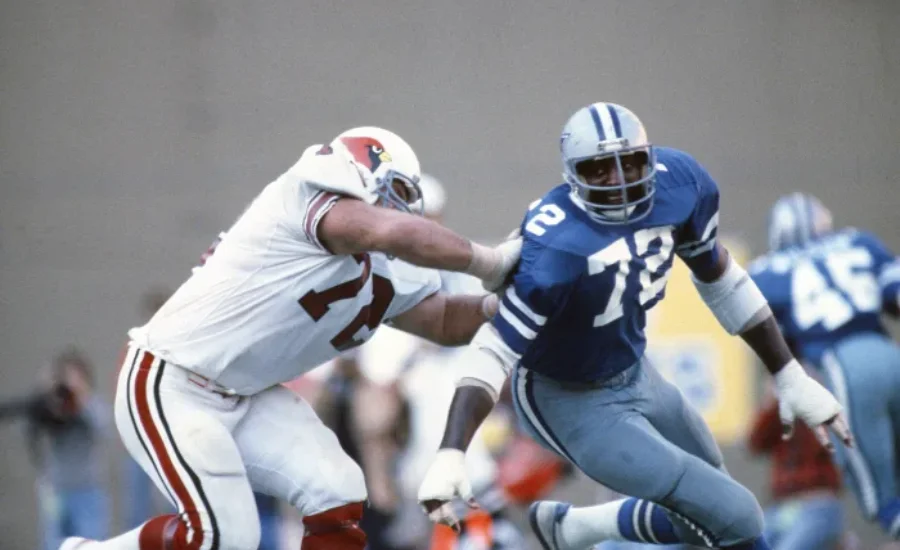
In a nutshell, the article dives deep into the unpredictable world of sports drafts, highlighting how these events can shape the future of teams. It emphasizes that whether a player becomes a star or falls short, the draft is all about bringing fresh talent into teams, aiming to change the course of games and upcoming seasons.
A grim reality exists, though, in the midst of all the excitement: not every player selected reaches their full potential. Despite the greatest efforts of research and analytical teams, there will always be players who fall short of the high standards set. It serves as a harsh reminder of the unpredictability of athletics and the dangers associated with player selection.
The biographies of seven players are told in the essay, each of them illuminating a distinct reason that can cause a discrepancy between potential and performance. It provides us with a deeper look at the complexity of the sports world by covering everything from injuries to personality conflicts and mental health issues.
But there’s a silver lining. The article stresses the importance of learning from past mistakes. When teams make a wrong call in the draft, it’s a chance for them to tweak their strategies and scouting methods, reducing the chances of future letdowns.
In the end, the article captures the rollercoaster ride from being a promising prospect to facing challenges, exploring the highs and lows of the draft experience. It challenges our usual ideas of success and failure in sports, reminding us that the human side of things – the struggles and vulnerabilities – plays a big part in determining the fate of athletes and teams. As sports keep evolving, these stories become valuable lessons, guiding us toward a more thoughtful and resilient approach to drafting.
Unattainable Expectations and Intense Pressure
Entering professional leagues as a young athlete can be incredibly challenging due to the intense pressure of meeting unrealistic expectations. Being chosen in high draft positions often brings lofty expectations, and when players face difficulties in meeting them right away, the pressure only increases. Dealing with constant scrutiny and the fear of letting down fans and team management takes a toll on a player’s mental well-being, making it difficult for them to grow and improve in such a demanding environment.
Shifting Dynamics in the Game
The sports realm is ever-changing, with game styles and tactics constantly evolving. A player chosen in a draft who thrived in a specific era or system might find it challenging to adjust to shifts in the game. Whether it’s a change in playing style, tweaks in rules, or advancements in sports science, not keeping up with these evolving dynamics can lead to a player’s decline. Teams that overlook these changes and don’t adapt their methods for player development may find themselves with a draft pick that doesn’t quite live up to expectations on their team.
Learnings and Ways Forward
Not only do these memories evoke the disappointments and frustrations associated with missed draft picks, but they also hold important lessons for players, teams, and fans. These lessons stress the value of resiliency, tenacity, and modesty in the face of difficulties.
Setbacks can be viewed by athletes as chances for personal development and introspection. They offer an opportunity to reassess objectives, rectify areas of weakness, and renew dedication to achieving perfection. The failure of draft selections to pan out for a team highlights the unpredictable nature of player development and the need for extensive scouting, training, and support systems to unlock youthful talent.
Final Words
In the thrilling world of pro sports, the term “unsuccessful draft pick” paints a picture of dashed hopes and unrealized dreams. It’s that tough reality check – not every rising star drafted into the big leagues becomes the game-changer we all hoped for. Despite the scouts doing their homework, there’s a myriad of reasons – from unexpected injuries to off-field hiccups – that can throw a curveball in a player’s journey.
But it’s more than just stats and game plays; it’s about the emotional rollercoaster for fans and the team. The fallout isn’t just about dollars lost; it’s about team spirit taking a hit and fans questioning if the dream team is still in the making.
Yet, in the disappointment, there’s a silver lining. It’s a call for teams to rethink their game plan, learn from the misses, and come back stronger. It’s a reminder that the road from draft day hype to on-field success is a twisty one, demanding resilience, adaptability, and a whole lot of heart from everyone involved.

